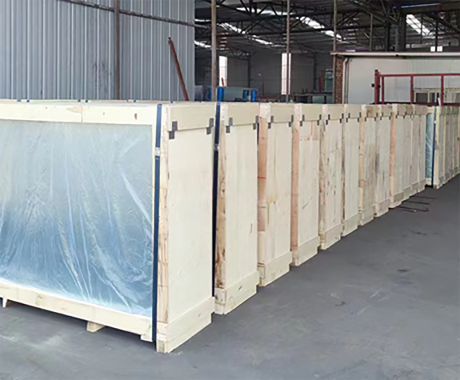

The Allure of Blue Tinted Glass A Reflection on Beauty and Functionality
In the realm of architectural design and artistry, one material has captured the imagination of many blue tinted glass. This striking medium serves both aesthetic and practical purposes, transforming spaces while creating a serene ambiance. From skyscrapers to residential homes, blue tinted glass is gaining popularity for its unique properties and enchanting visual appeal.
Blue tinted glass derives its color from various additives that are incorporated during the manufacturing process. The tint can range from a light, almost transparent blue to a deep, rich hue that evokes the colors of the ocean. This versatility allows architects and designers to experiment with the intensity of the tint, making it suitable for a wide range of projects, from modern office buildings to cozy residential spaces. The ethereal quality of blue tinted glass invites light into the environment while simultaneously filtering out harsh sunlight, creating a calm and soothing atmosphere.
One of the most significant benefits of blue tinted glass is its ability to reduce glare and heat gain. In urban areas, where buildings often absorb and radiate heat, blue tinted glass acts as a protective shield. By reflecting a portion of the sun's rays, it helps maintain a comfortable temperature indoors, reducing the reliance on air conditioning and promoting energy efficiency. This not only benefits the occupants but also contributes to sustainable building practices, a crucial consideration in today’s environmental landscape.
Furthermore, blue tinted glass enhances privacy without sacrificing natural light. Unlike traditional tinted windows, which can make spaces feel dark and enclosed, blue tinted glass allows for a bright, airy environment while obscuring visibility from the outside. This quality is particularly advantageous for offices and homes situated in busy urban settings, where privacy is often compromised. The soft blue hue provides a sense of shelter, allowing individuals to enjoy their space without feeling exposed.

Architecturally, blue tinted glass offers a sleek, modern aesthetic that is hard to replicate with other materials. It complements a variety of design styles, seamlessly integrating into both contemporary structures and more traditional buildings. Its captivating appearance can transform a simple façade into a stunning feature, drawing the eye and sparking curiosity. Whether used as large glass panels in commercial buildings or in smaller installations such as windows and partitions, blue tinted glass adds a distinctive character that enhances the overall design.
The versatility of blue tinted glass extends to its use in decorative applications as well. Artists and designers have begun to explore its potential beyond functional purposes, incorporating it into artworks and installations. Sculptures made from blue tinted glass can refract and reflect light in captivating ways, creating dynamic displays that change with the viewer's perspective. The interplay of light and color adds an extra layer of complexity to artistic expressions, making blue tinted glass a favored choice among modern artists.
Moreover, the psychological impact of blue is well-documented. The color is often associated with tranquility, calmness, and stability. By incorporating blue tinted glass into spaces, designers can invoke these sentiments in the occupants. Blue has been shown to reduce stress and promote a sense of well-being; thus, spaces adorned with this glass can foster a more productive and peaceful environment, whether in a workplace or a home.
As the architectural landscape continues to evolve, the use of blue tinted glass is expected to expand further. Innovations in glass technology may pave the way for even more sophisticated applications, including smart glass that can adjust its tint based on sunlight intensity. This would not only enhance comfort but also push the boundaries of aesthetics and functionality.
In conclusion, blue tinted glass represents a remarkable convergence of beauty and practicality in modern architecture. Its enchanting visual appeal, coupled with its functionality in enhancing energy efficiency and privacy, makes it an increasingly sought-after material in design. Whether utilized in grand commercial structures or intimate residential spaces, blue tinted glass is a testament to the power of color and light in shaping our environments. As we continue to explore its potentials, this striking medium will undoubtedly remain a beloved choice for architects and designers for years to come.